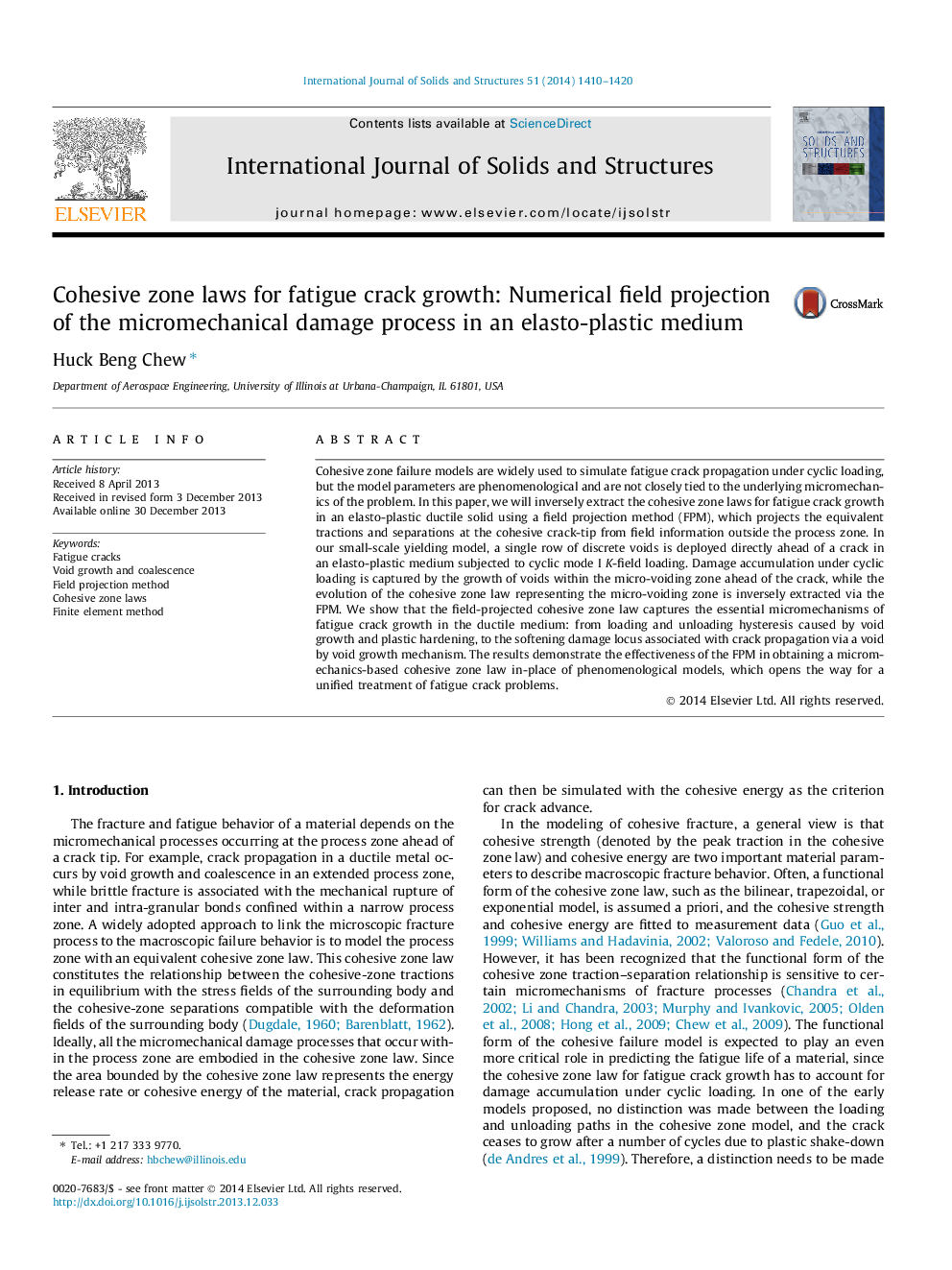| Article ID | Journal | Published Year | Pages | File Type |
|---|---|---|---|---|
| 277770 | International Journal of Solids and Structures | 2014 | 11 Pages |
Cohesive zone failure models are widely used to simulate fatigue crack propagation under cyclic loading, but the model parameters are phenomenological and are not closely tied to the underlying micromechanics of the problem. In this paper, we will inversely extract the cohesive zone laws for fatigue crack growth in an elasto-plastic ductile solid using a field projection method (FPM), which projects the equivalent tractions and separations at the cohesive crack-tip from field information outside the process zone. In our small-scale yielding model, a single row of discrete voids is deployed directly ahead of a crack in an elasto-plastic medium subjected to cyclic mode I K-field loading. Damage accumulation under cyclic loading is captured by the growth of voids within the micro-voiding zone ahead of the crack, while the evolution of the cohesive zone law representing the micro-voiding zone is inversely extracted via the FPM. We show that the field-projected cohesive zone law captures the essential micromechanisms of fatigue crack growth in the ductile medium: from loading and unloading hysteresis caused by void growth and plastic hardening, to the softening damage locus associated with crack propagation via a void by void growth mechanism. The results demonstrate the effectiveness of the FPM in obtaining a micromechanics-based cohesive zone law in-place of phenomenological models, which opens the way for a unified treatment of fatigue crack problems.
